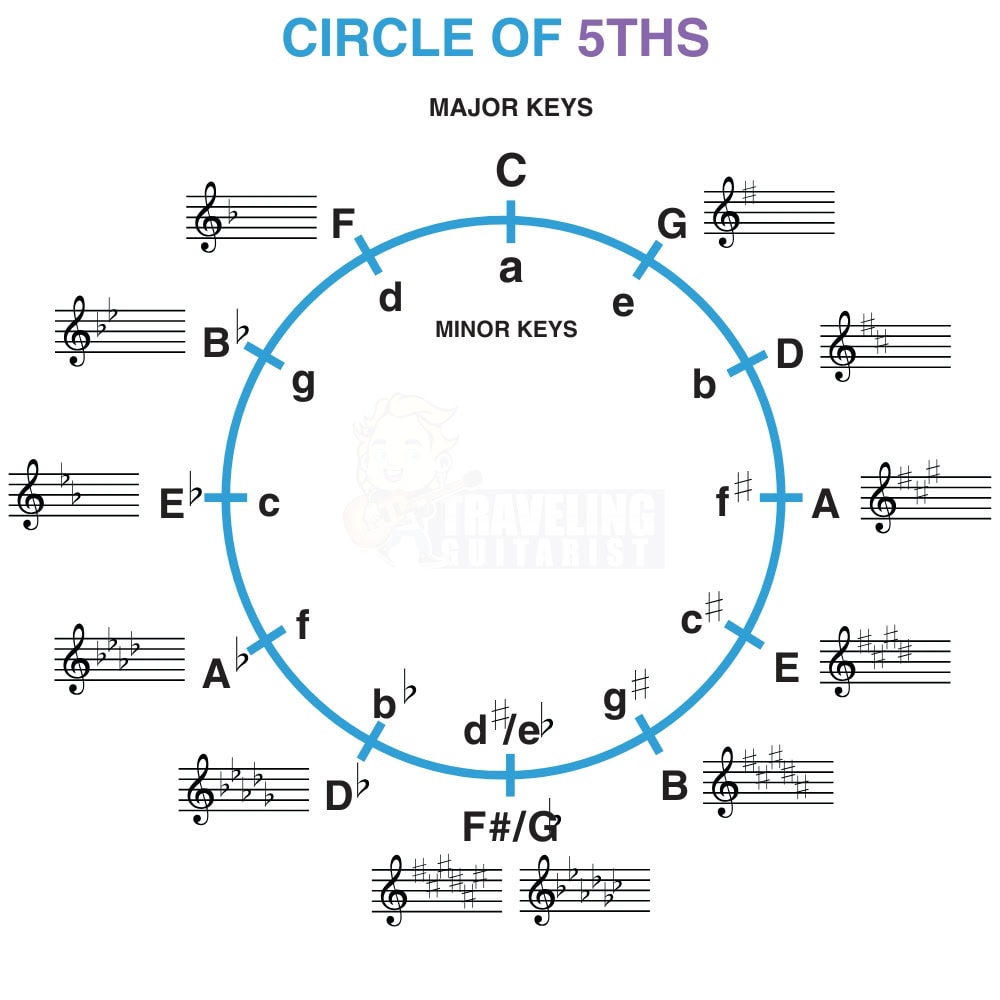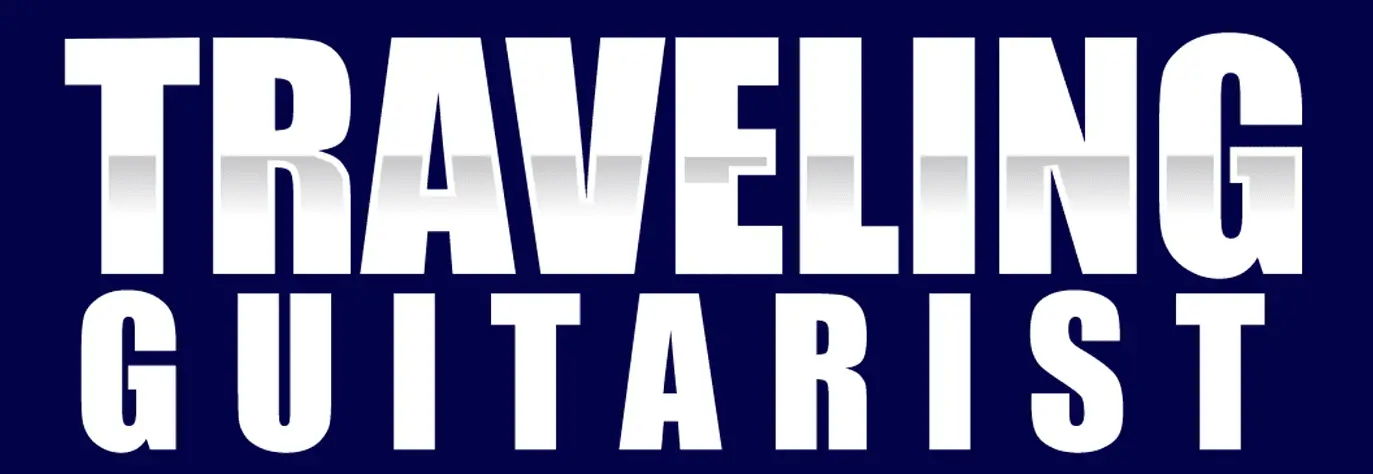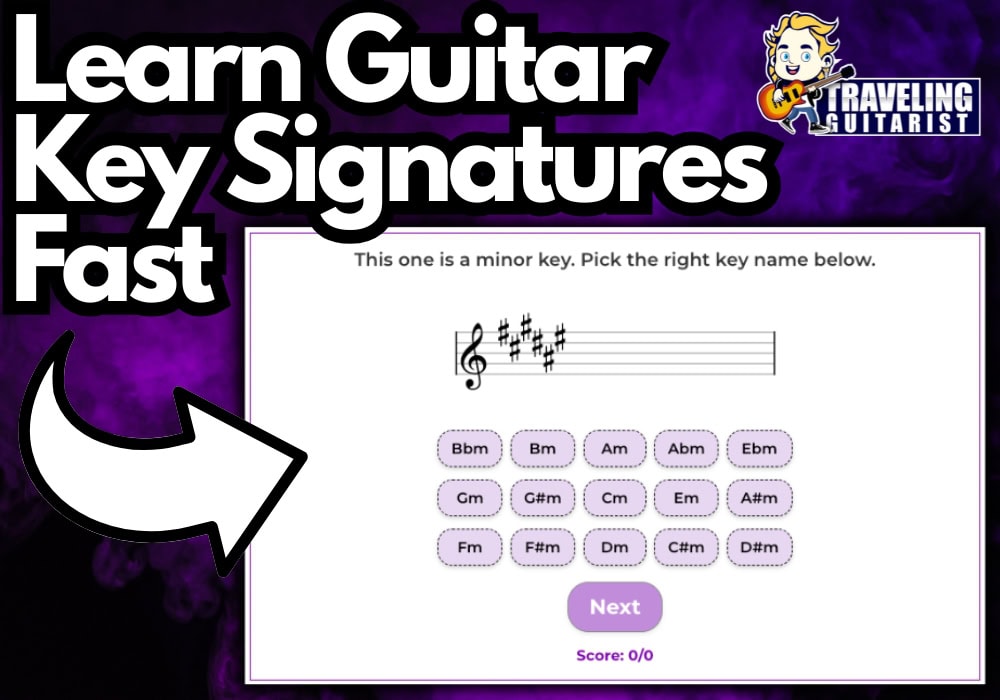Key Signature Quiz
What The Key Signature Memorization Tool Does
Hey — great to see you again. This is a Key Signature Quiz to help you lock down your major and minor key signatures. It’s a quick, fun way to run through all 30 keys in the treble clef.
Nothing replaces actually playing and sight-reading, that much is for certain.
But this quiz is perfect for reinforcing what you’ve learned when you’re on a smoke break, waiting on laundry, or letting dinner cook—way better than doom-scrolling social media.
The quiz displays a random key signature, you choose its name from the grid, and your score updates as you go. Give it a spin and let me know it goes.
If you want the version that includes the bass and treble clef, go to my full quiz on Producer Society.
How to Use the Key Signature Quiz
1) Read the Prompt
- The question text tells you whether it’s a “major” or “minor” key.
2) Identify the Signature
- Look at the staff: count and position the sharps or flats.
- Click the button that matches the key’s name (e.g. “D♭” or “Bm”).
3) Check Your Answer
- Correct answers turn green and play a confirmation sound; incorrect turn red.
- Click Next to move on.
4) Track Your Progress
- Your current score (right vs. total) shows at the bottom.
A Refresher: What Is a Key Signature?
A key signature sits just to the right of the clef on the staff and tells you which notes are always sharpened (♯) or flattened (♭) for the entire piece.
- Major keys follow a specific sequence of whole and half steps that generally sound bright and uplifting.
- Minor keys use natural, harmonic, or melodic patterns that often (but not always) feel darker or more somber.
The Order of Sharps & Flats
Accidentals in key signatures always appear in a fixed sequence:
- Sharps (♯): F♯ → C♯ → G♯ → D♯ → A♯ → E♯ → B♯ Mnemonic: “Father Charles Goes Down And Ends Battle”
- Flats (♭): B♭ → E♭ → A♭ → D♭ → G♭ → C♭ → F♭ Mnemonic: “Battle Ends And Down Goes Charles’ Father”
Building a Key Signature
1) Sharp Keys
- Begin with C major (no sharps).
- To move to G major, add the first sharp (F♯).
- For D major, include the next two sharps (F♯, C♯), and so on, following the sharps order.
2) Flat Keys
- Start again at C major (no flats).
- F major gets one flat (B♭).
- B♭ major uses the first two flats (B♭, E♭), and you continue adding in the flats order.
With these patterns in hand, you can identify or construct any major or minor key signature quickly and confidently.
Memorization Tips

1) Circle of 5ths
Picture the keys arranged like hours on a clock. Moving one “hour” clockwise adds a sharp; moving one “hour” counter-clockwise adds a flat.
2) My Favorite Memory Hacks
I use a couple of simple tricks for remembering the keys and I’ll share all of them now.
Major Keys with Sharps
- Rule: The key’s name is a half-step above its last sharp.
- Example: B major has F♯, C♯, G♯, D♯, A♯. The note a half-step above A♯ is B—so B major.
Major Keys with Flats
- Rule: The key’s name is the second-to-last flat.
- Example: E♭ major has B♭, E♭, A♭. The flat before A♭ is E♭—so E♭ major.
Finding the Relative Minor
Example: A major (F♯, C♯, G♯) → count up six notes (A–B–C♯–D–E–F♯) → F♯ minor shares those three sharps.
Every major key has a “relative” minor that uses the same key signature.
Trick: It’s the 6th scale degree of the major scale.

